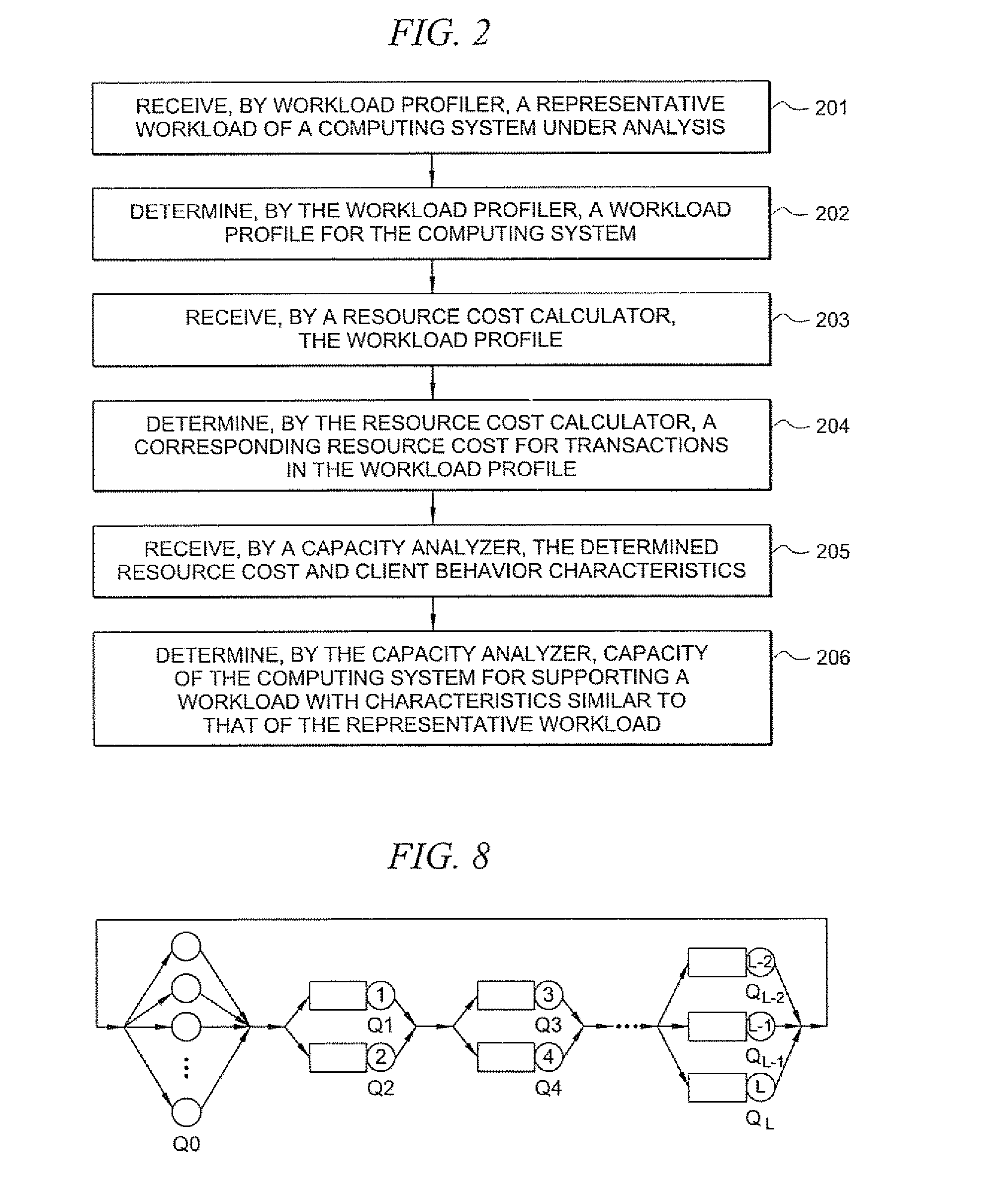System and method for capacity planning for computing systems
a technology of computing system and capacity planning, applied in the field of capacity planning for computer systems, can solve the problems of predicting and controlling the issues surrounding system performance and capacity planning, which are a difficult and sometimes overwhelming task for many organizations, and the application performance issue has an immediate impact on customer satisfaction, and the largest and least controlled expens
- Summary
- Abstract
- Description
- Claims
- Application Information
AI Technical Summary
Benefits of technology
Problems solved by technology
Method used
Image
Examples
Embodiment Construction
[0021]Various embodiments of the present invention are now described with reference to the above figures, wherein like reference numerals represent like parts throughout the several views. As described further below, the present invention provides systems and methods for capacity planning for computing systems. According to certain embodiments, an exemplary capacity planning framework is provided that is operable to receive a representative workload of a computing system, determine resource costs for serving transactions included in the representative workload, and use the determined resource costs for performing capacity planning analysis for the computing system. As described further herein, such capacity planning analysis may indicate how many clients that act in a fashion consistent with the client activities reflected in the representative workload the computing system can support in a desired manner (e.g., provide responses to requests in sufficiently fast time, etc., such as ...
PUM
 Login to View More
Login to View More Abstract
Description
Claims
Application Information
 Login to View More
Login to View More - R&D
- Intellectual Property
- Life Sciences
- Materials
- Tech Scout
- Unparalleled Data Quality
- Higher Quality Content
- 60% Fewer Hallucinations
Browse by: Latest US Patents, China's latest patents, Technical Efficacy Thesaurus, Application Domain, Technology Topic, Popular Technical Reports.
© 2025 PatSnap. All rights reserved.Legal|Privacy policy|Modern Slavery Act Transparency Statement|Sitemap|About US| Contact US: help@patsnap.com



